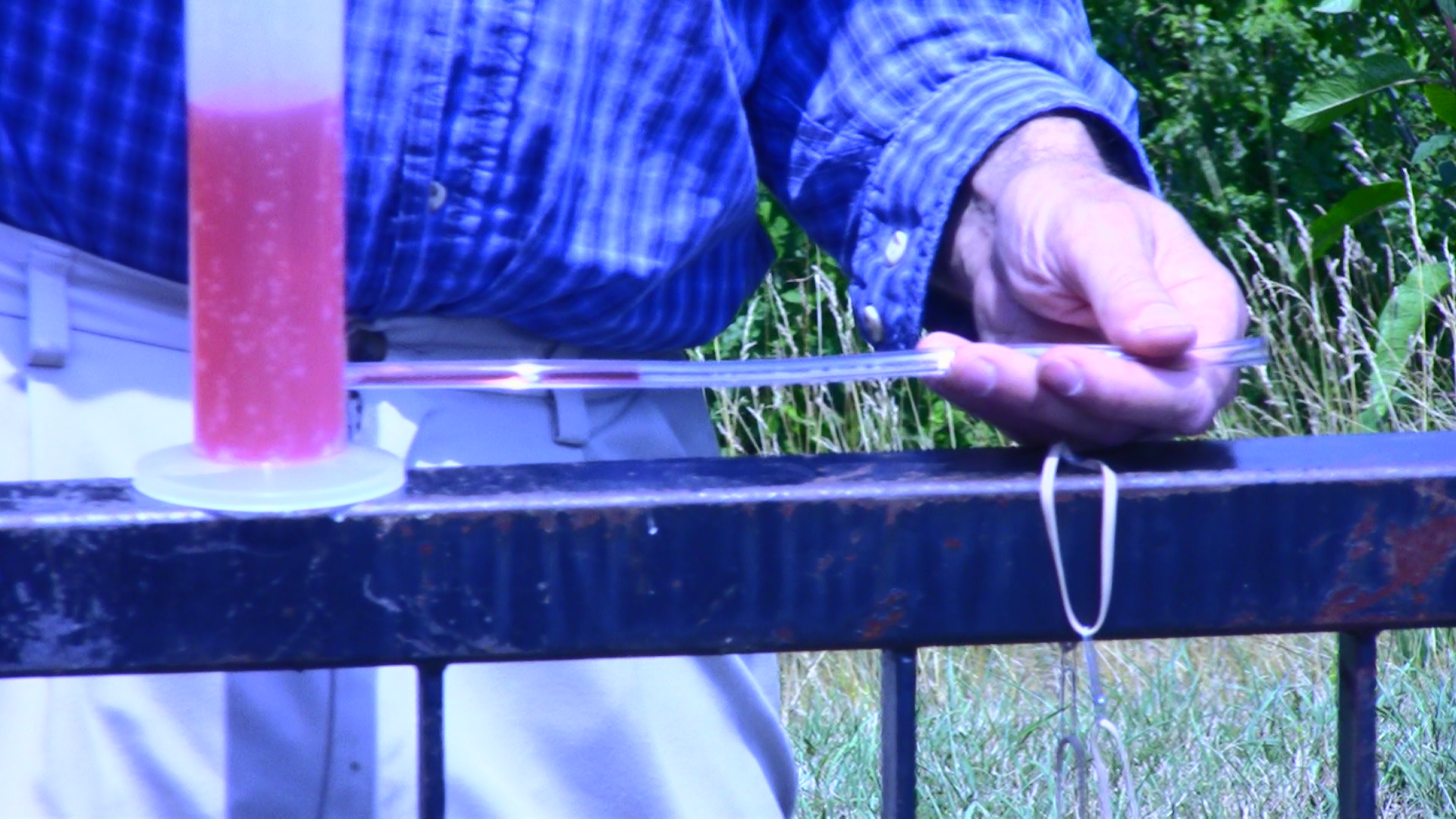 1
1Definitions of basic quantities used in this analysis
To answer the questions posed here you need to know the following:
average rate = (change in A) / (change in B).
It is assumed you know how to find the area of a circle.
It is assumed you know that an inch is about 2.54 centimeters.
Information about the pictures
You are given the following information about the pictures shown below:
In this series of pictures you see water from the cylindrical container filling the small tube, then flowing out of the end of the tube and arcing towards the ground.
Questions
Using the given information:

 2
2
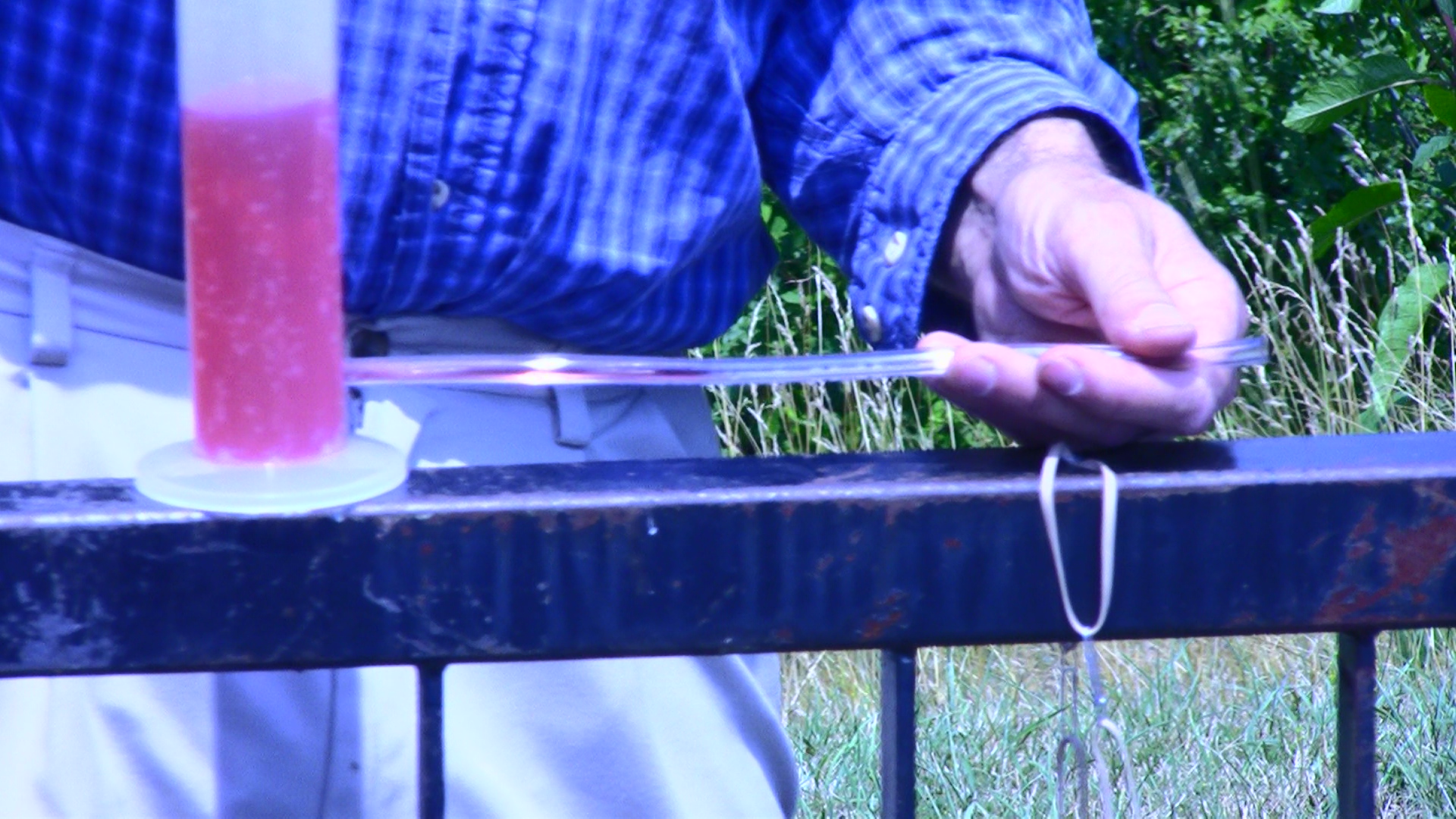
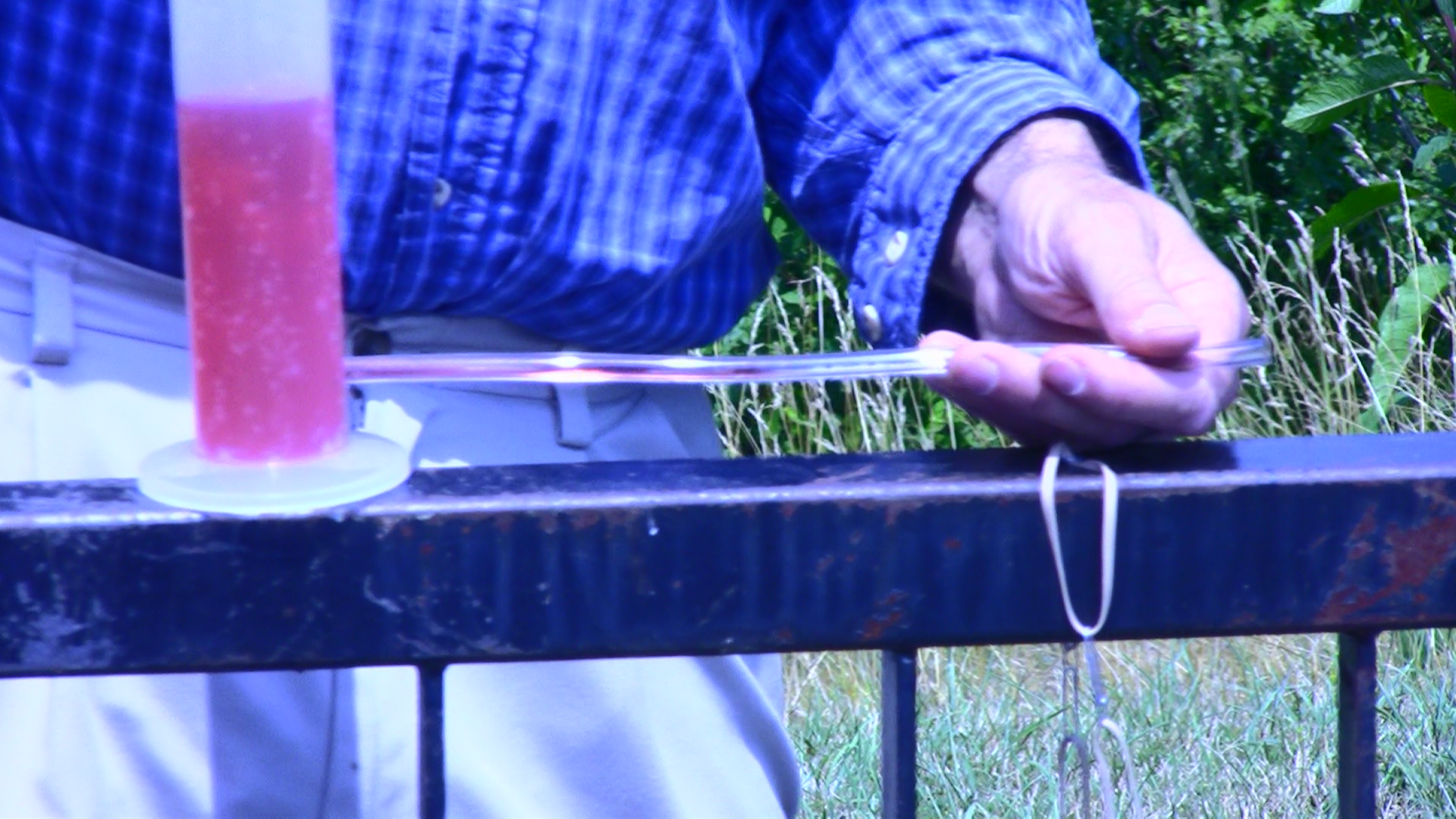 4
4
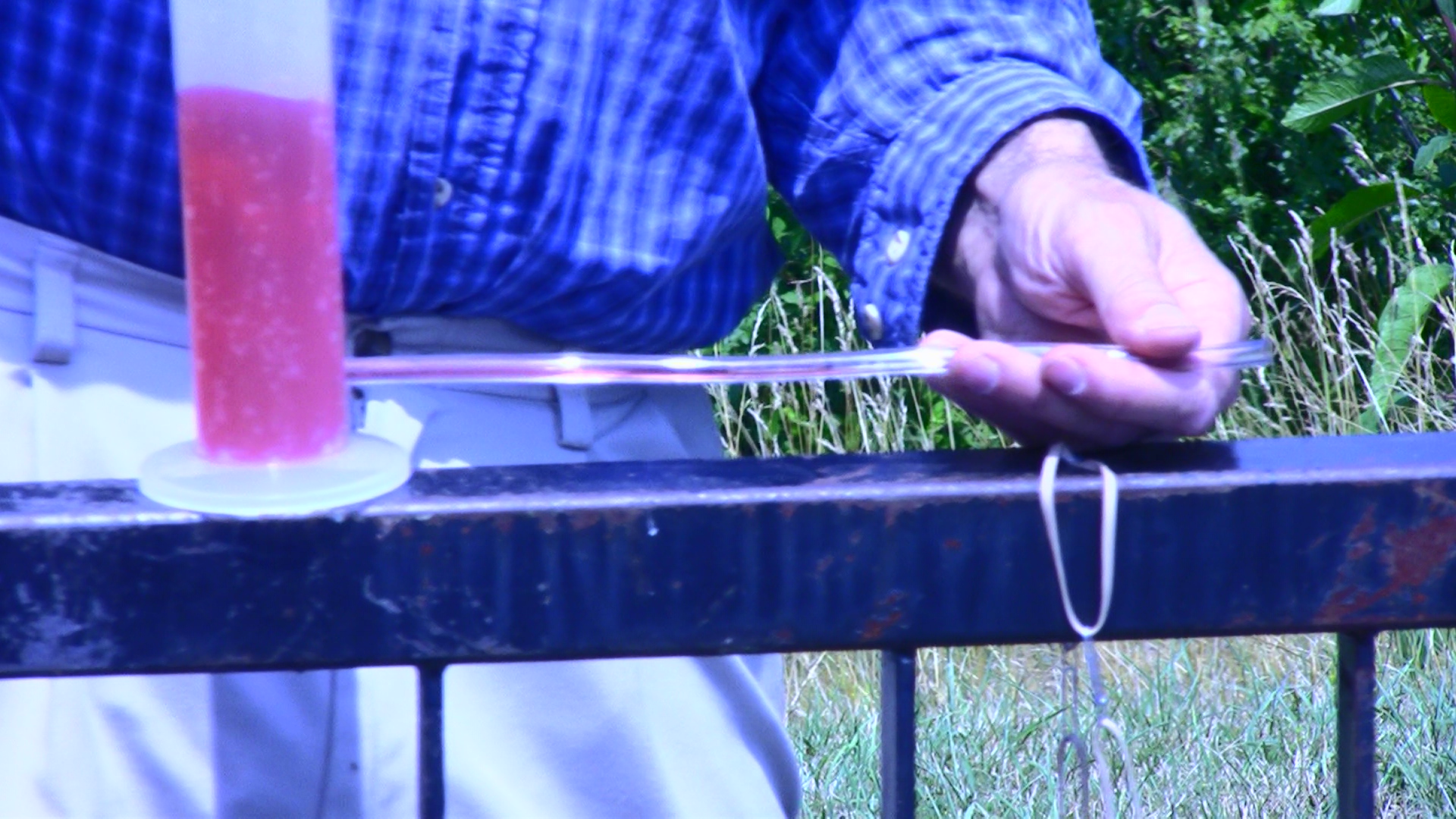 5
5
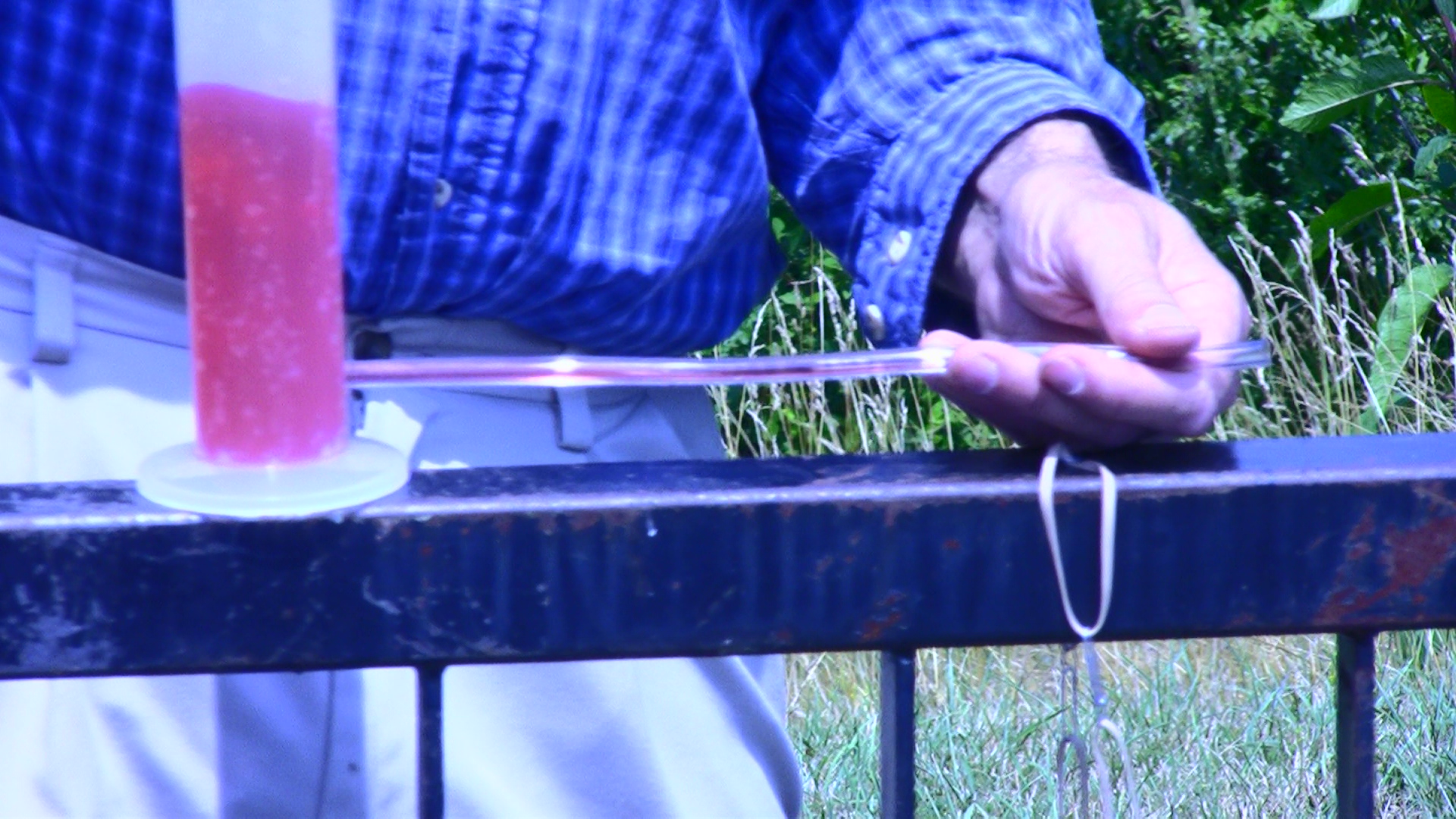 6
6
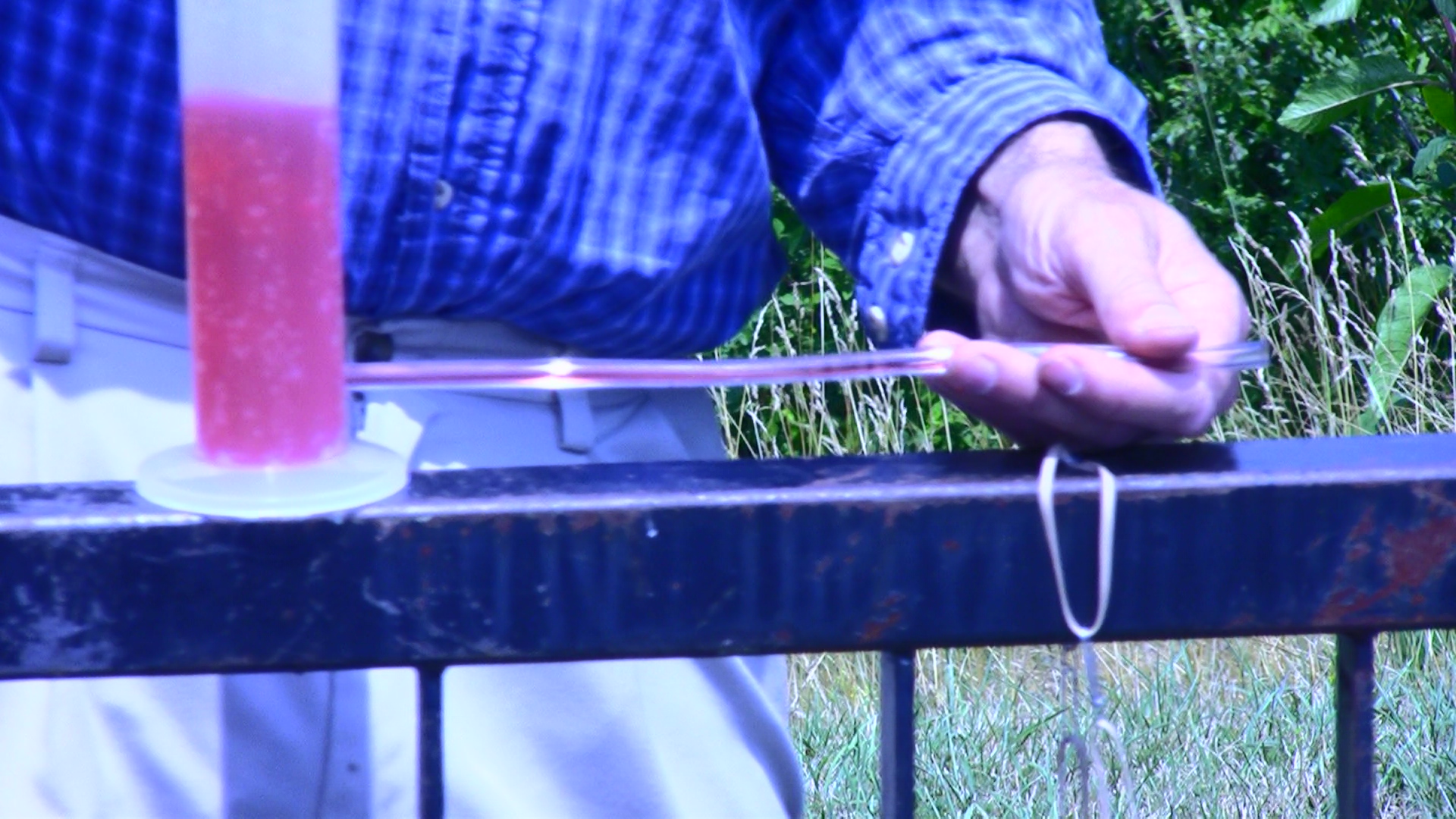 7
7
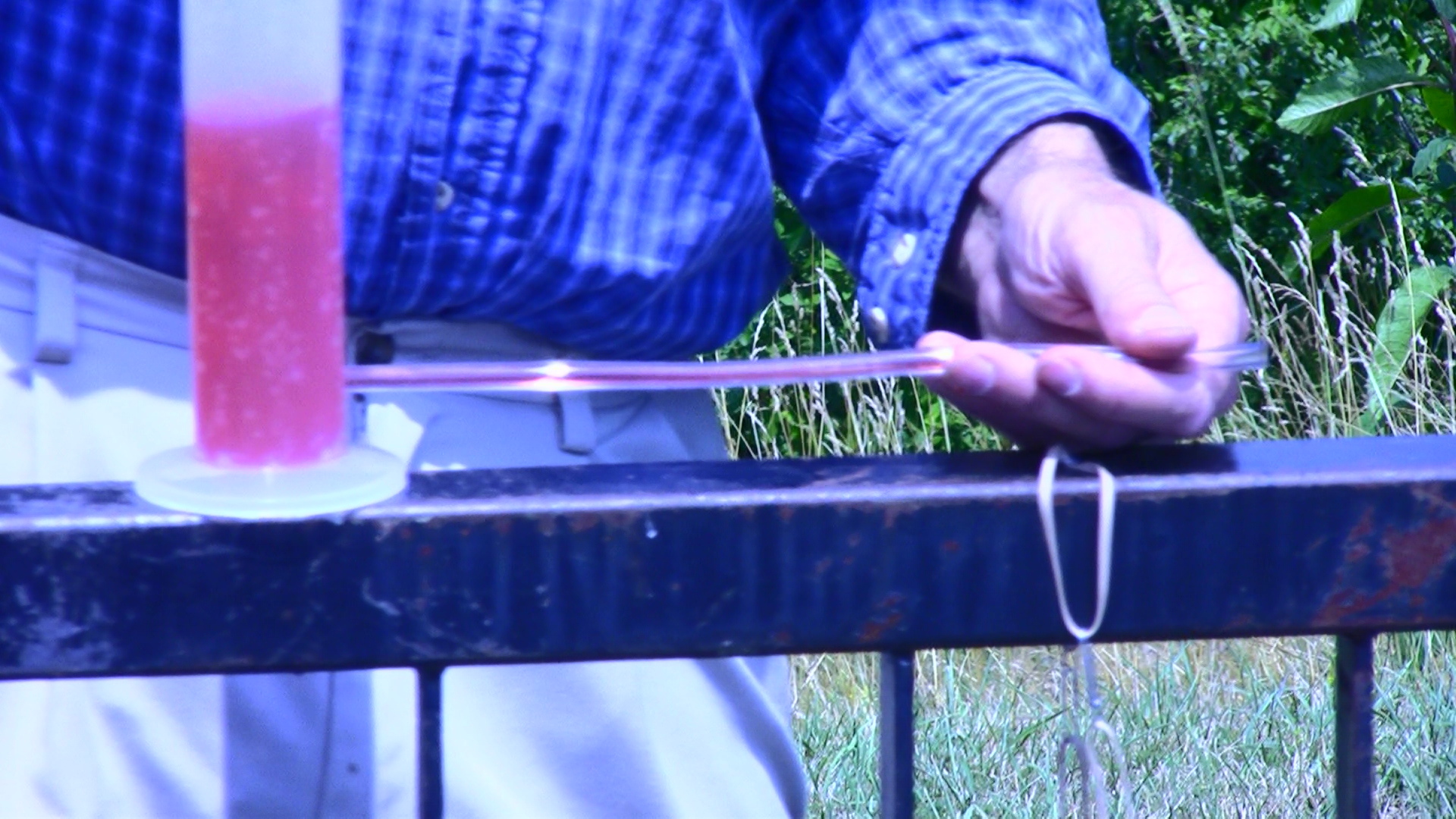 8
8
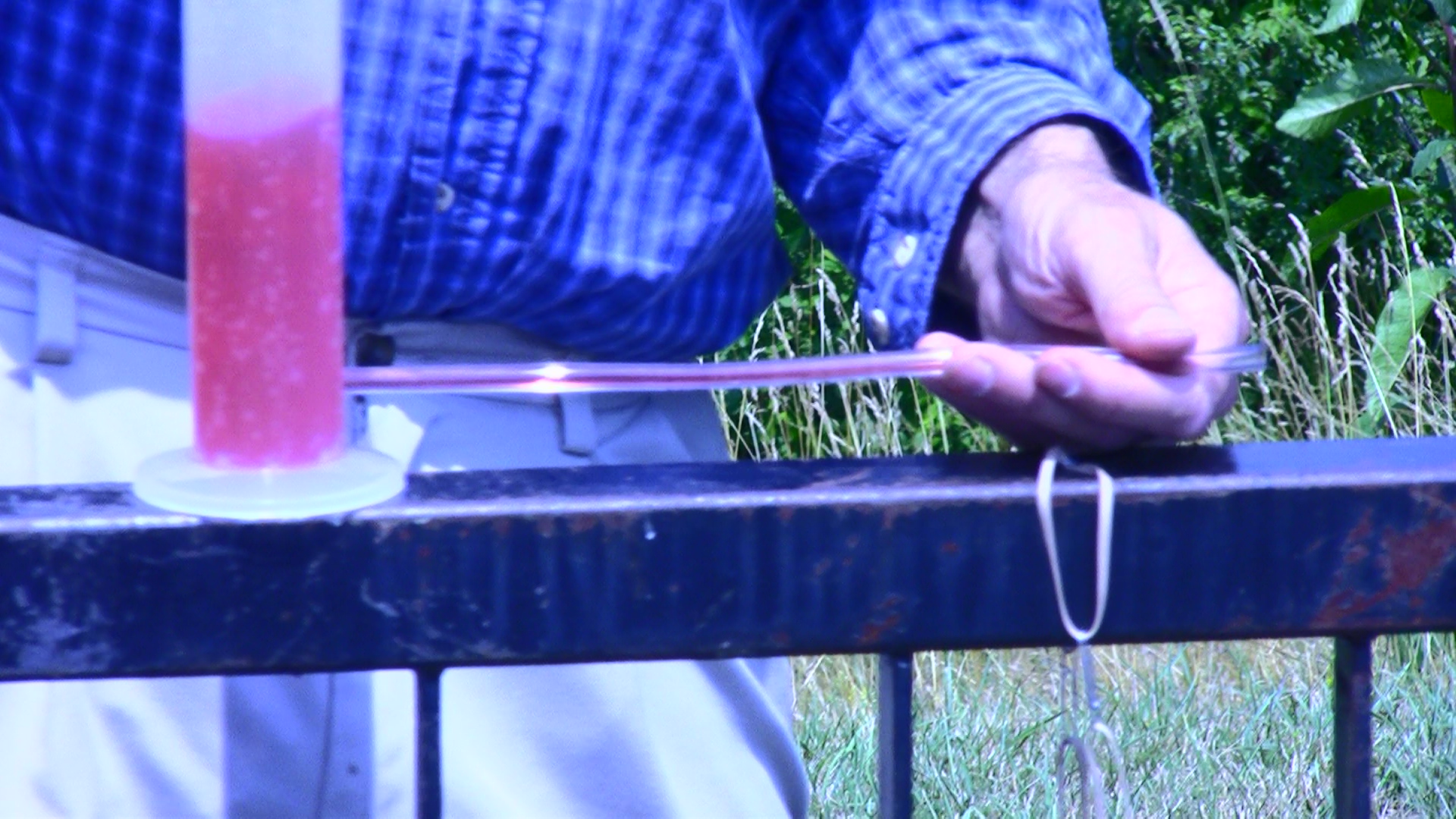 9
9
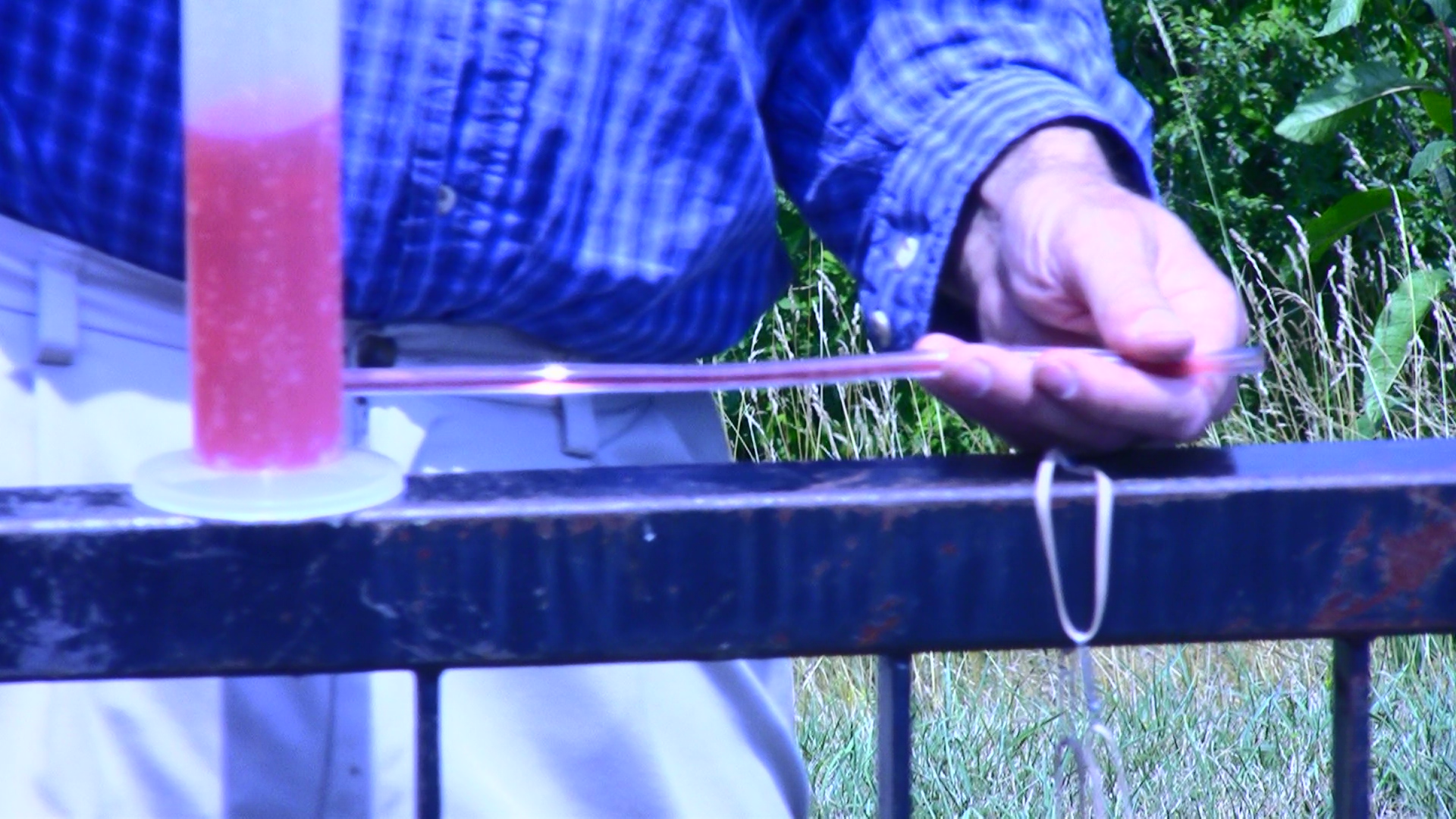 10
10
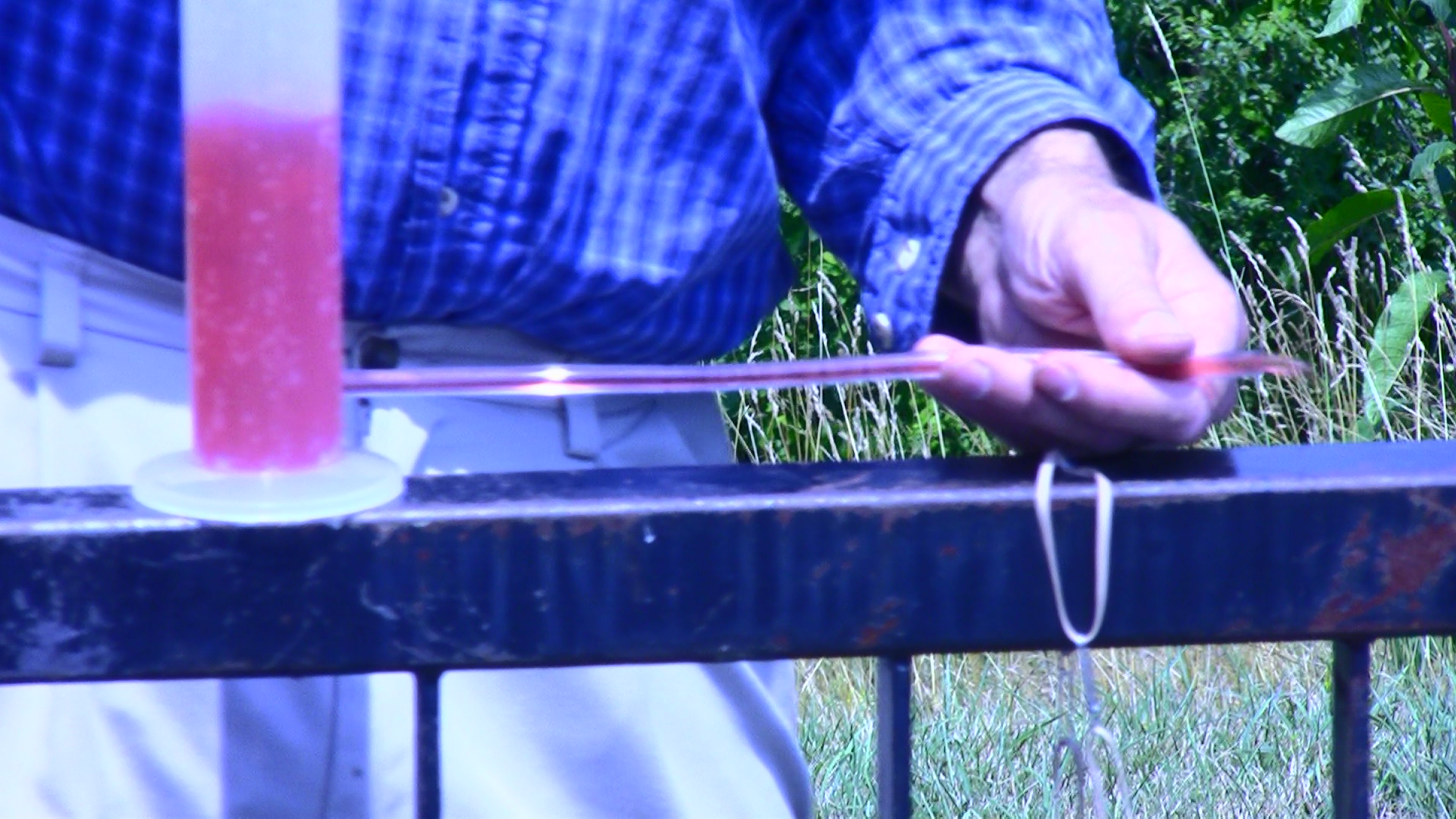 11
11
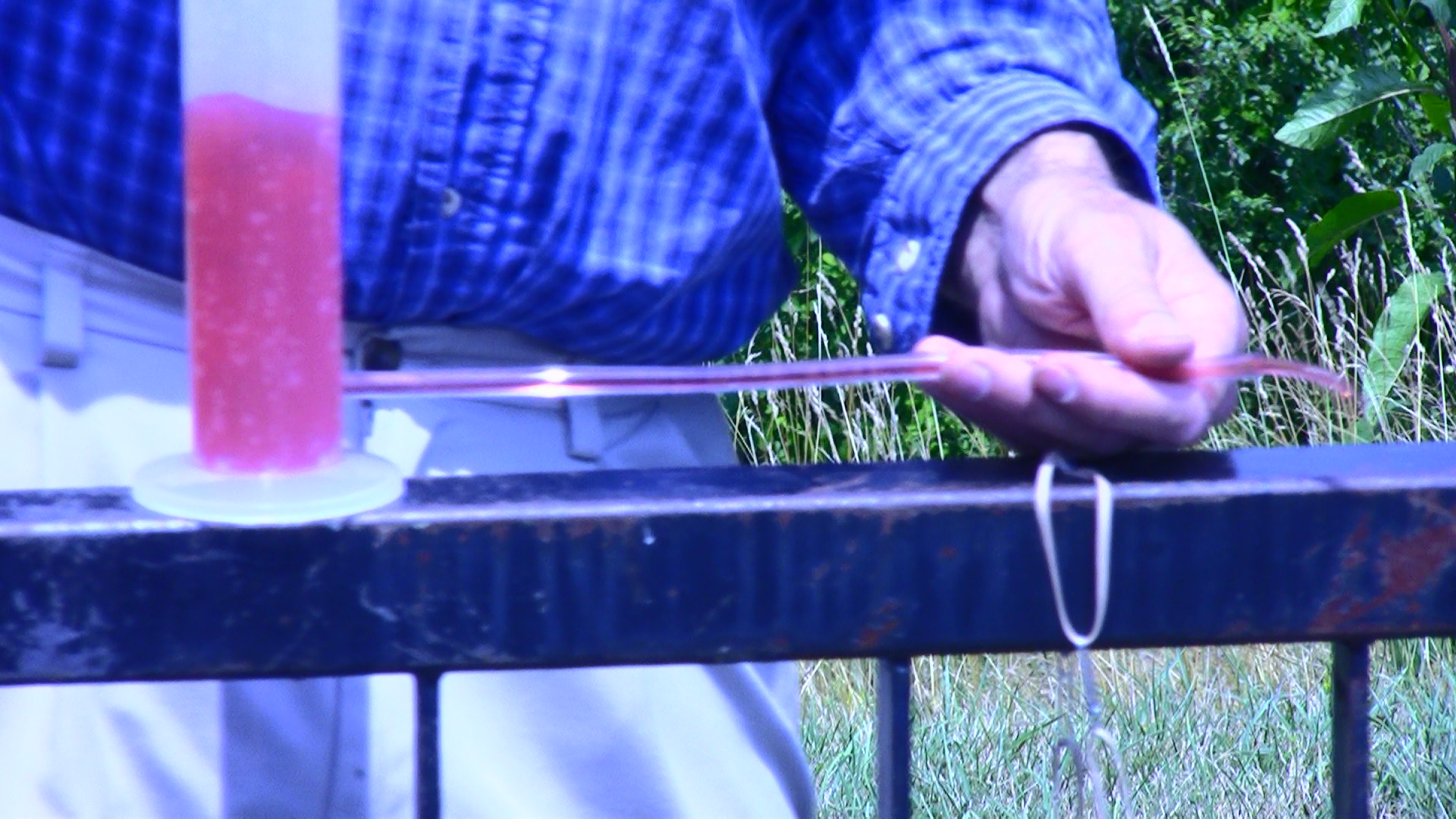 12
12
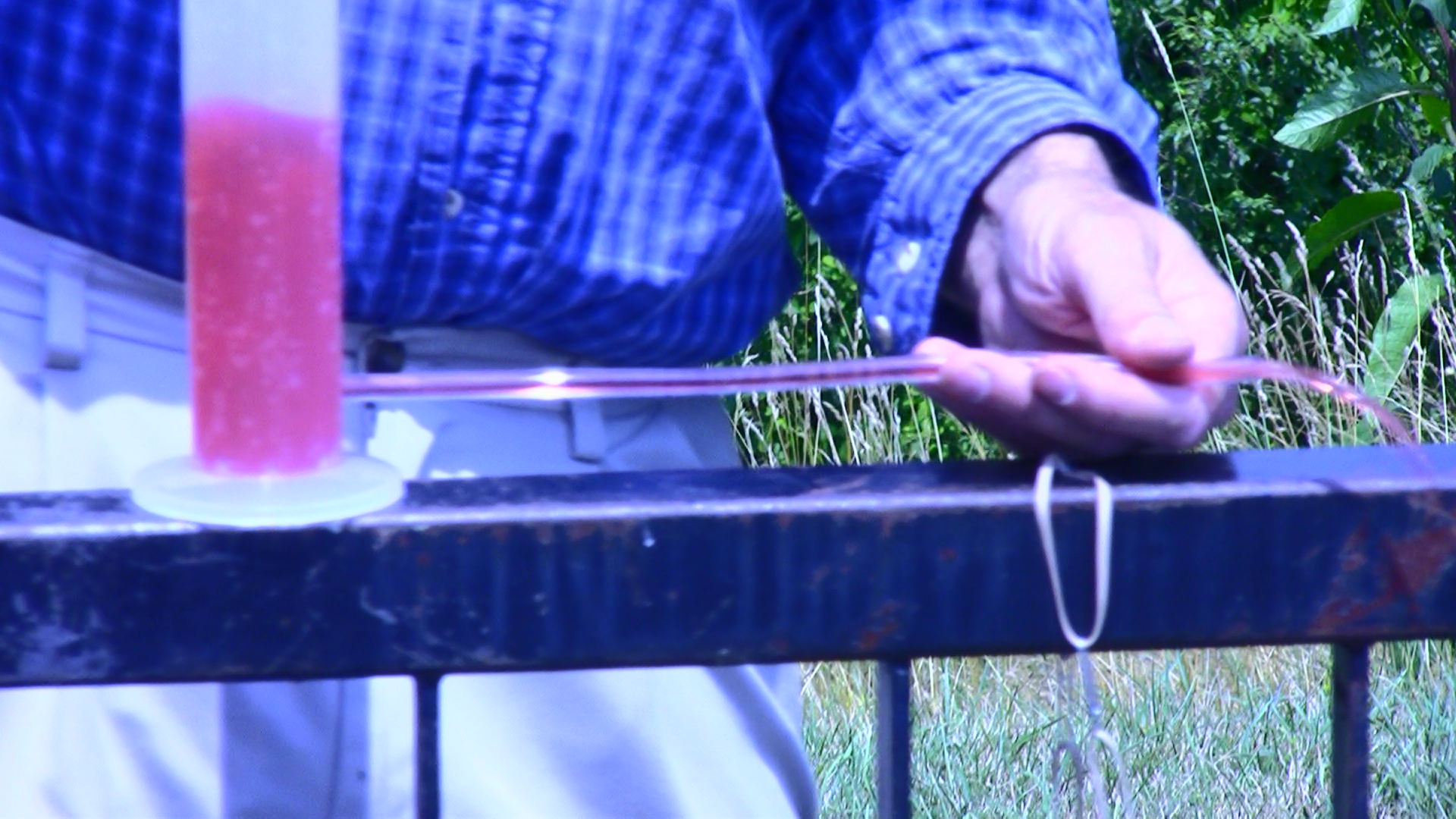 13
13
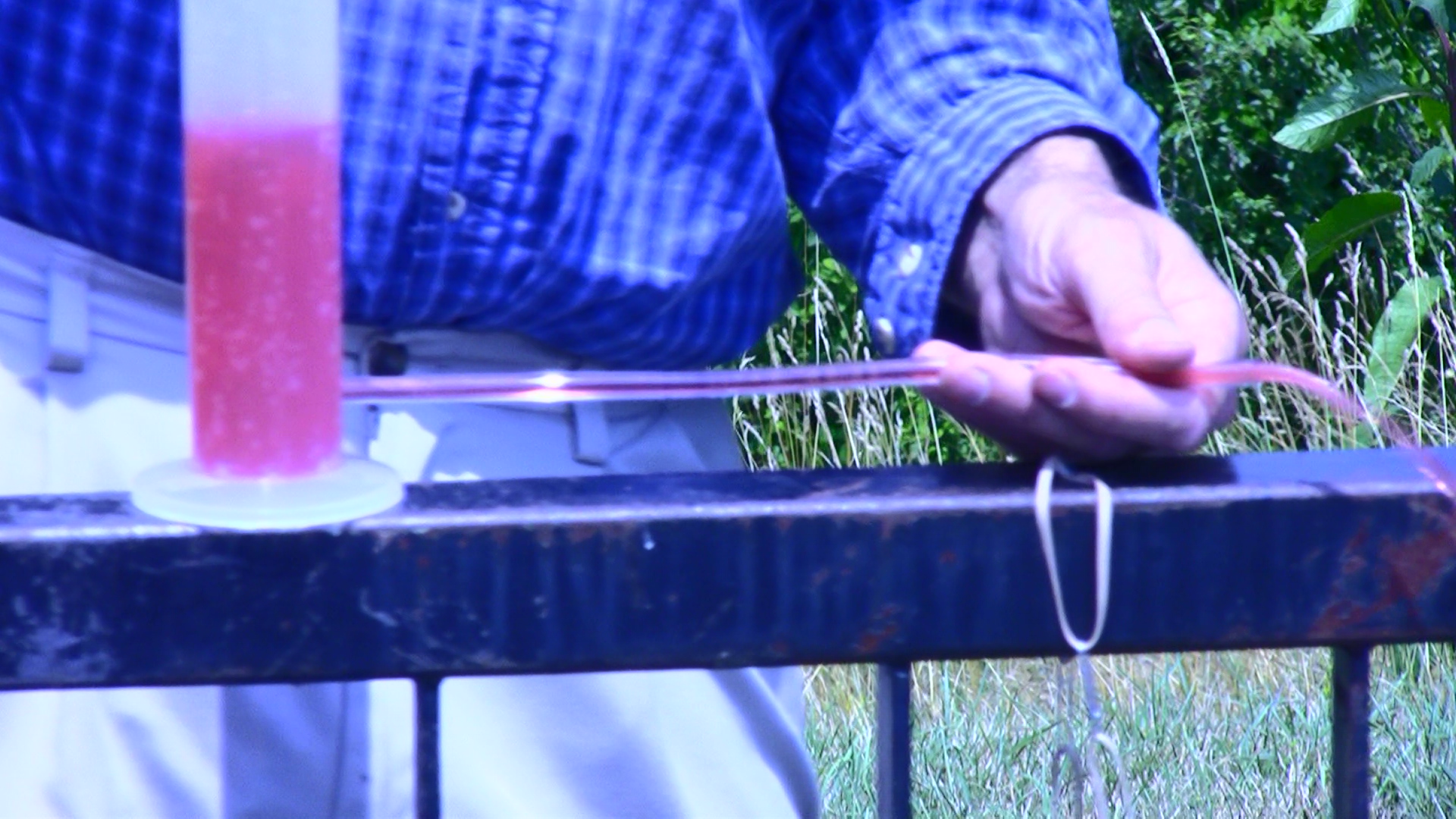 14
above frames are at intervals of 1/30 second
subsequent frames are at intervals of 1/3 second
14
above frames are at intervals of 1/30 second
subsequent frames are at intervals of 1/3 second
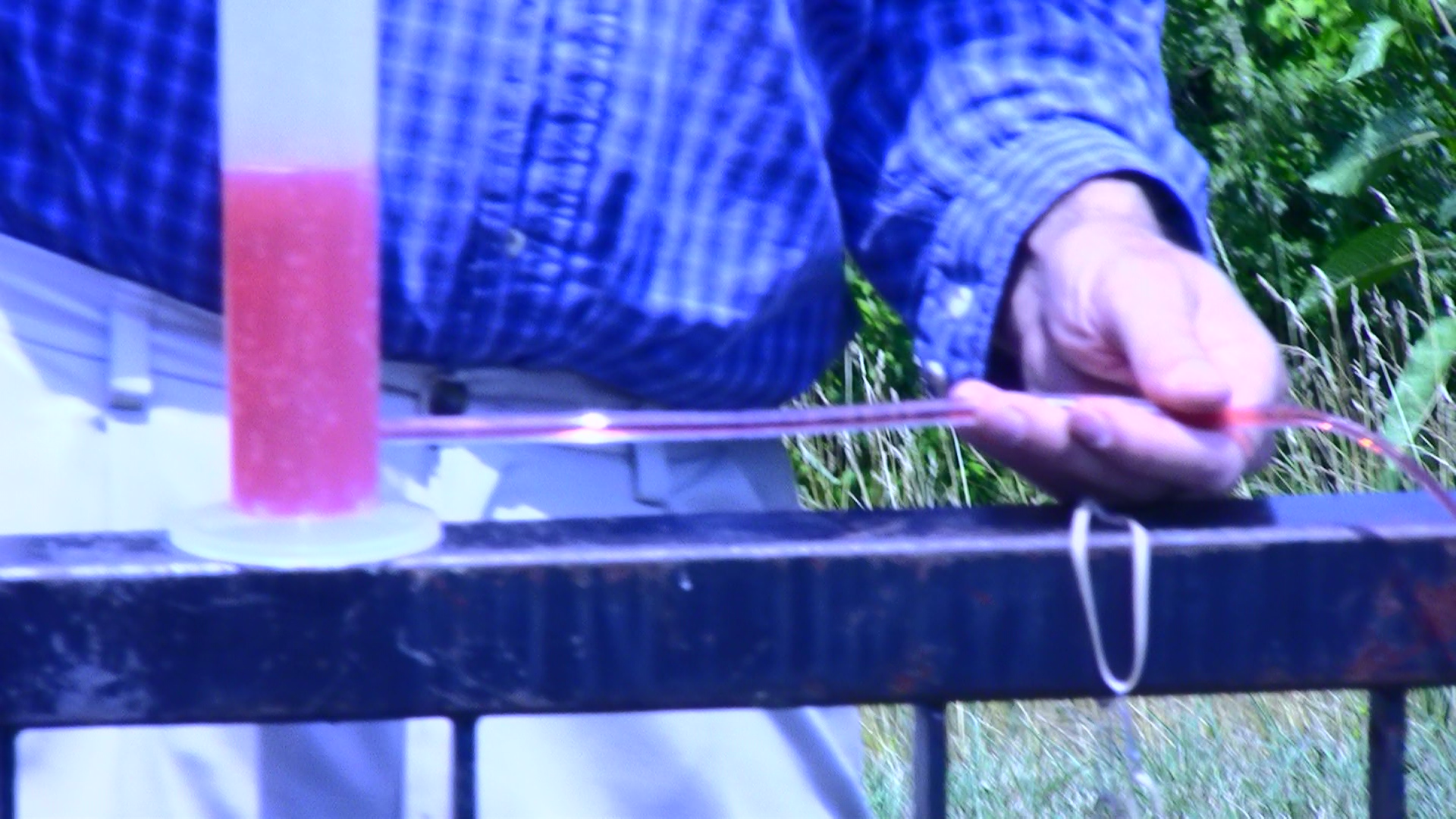 24
24
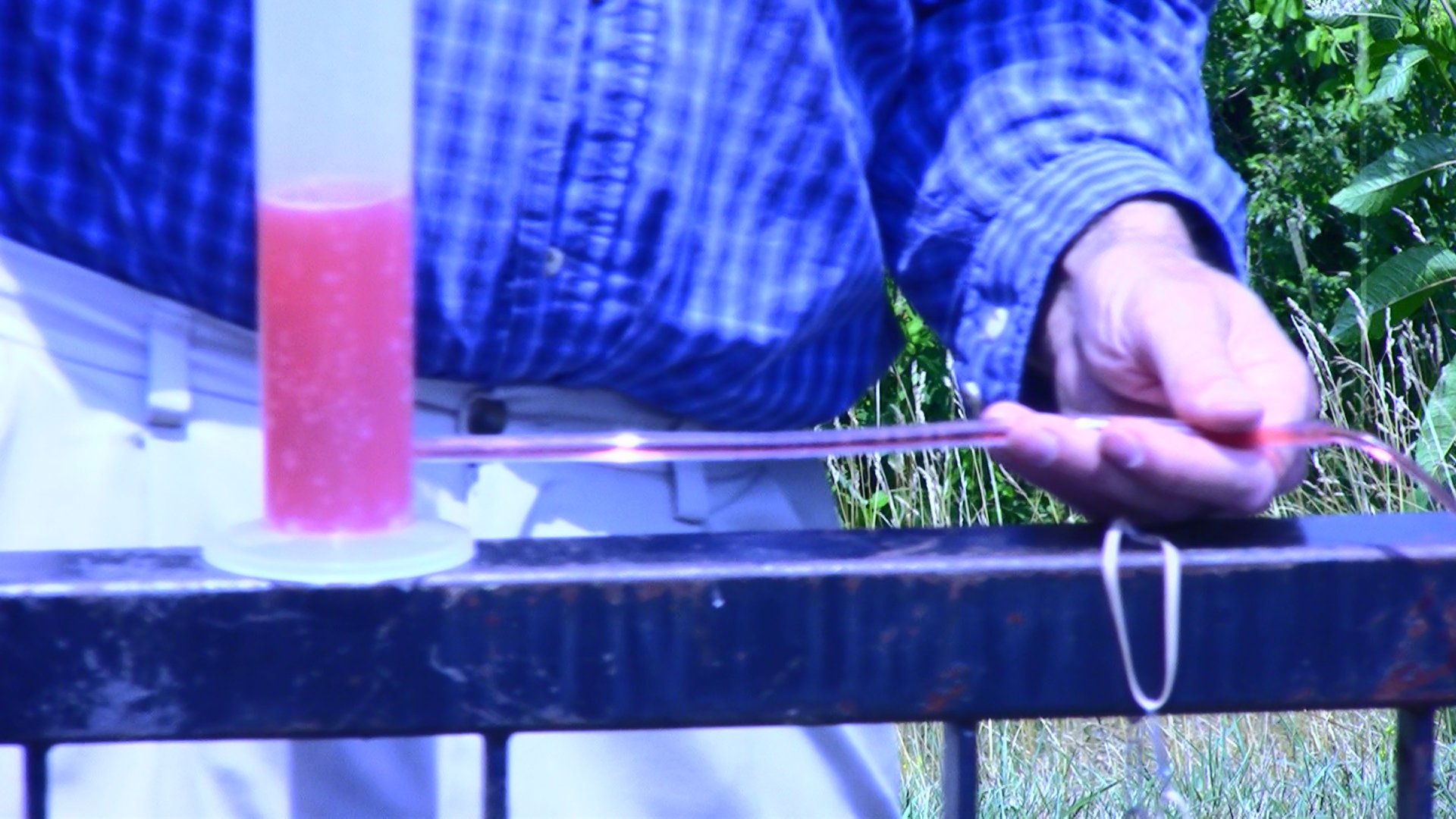 34
34
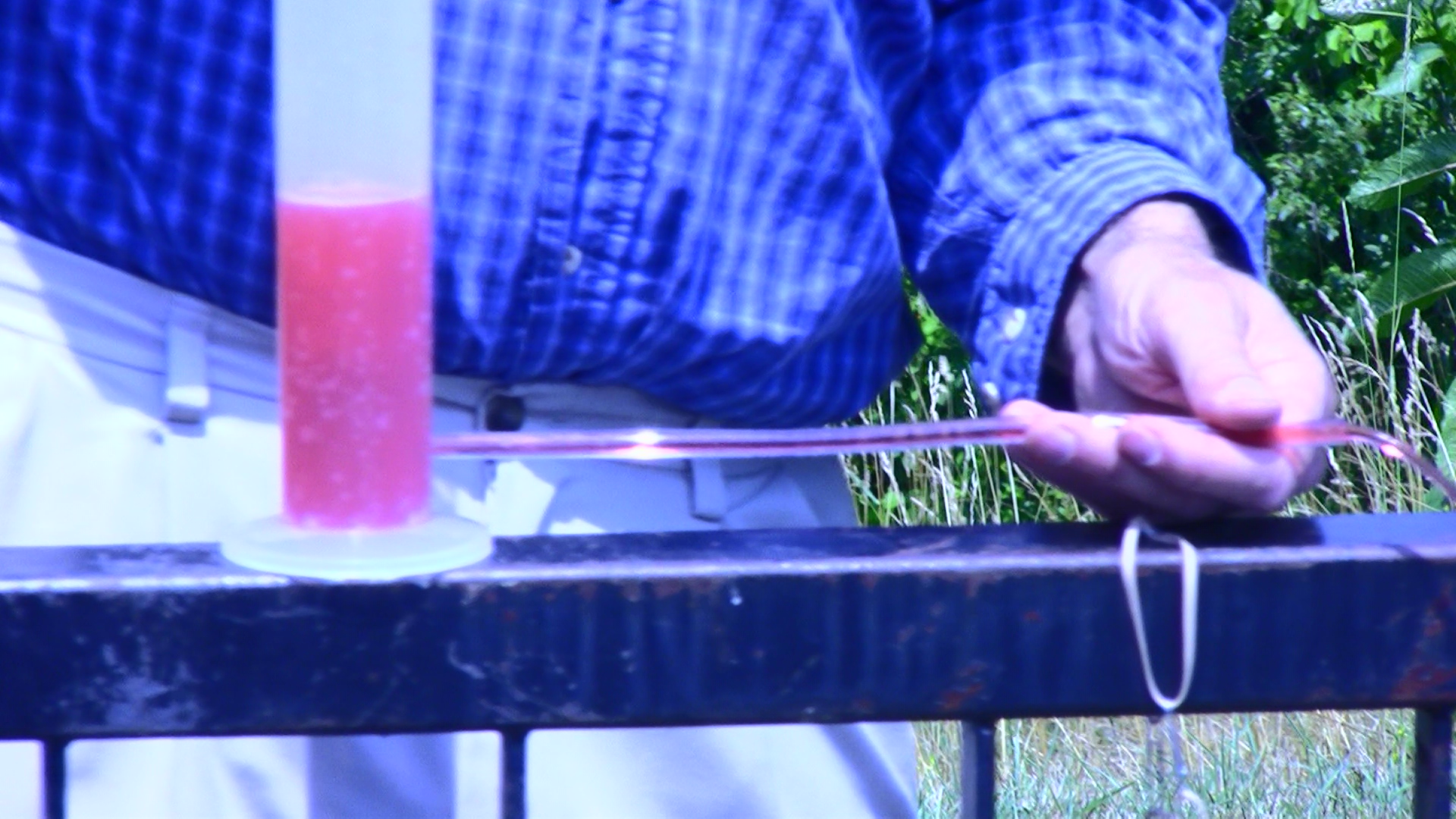 44
44
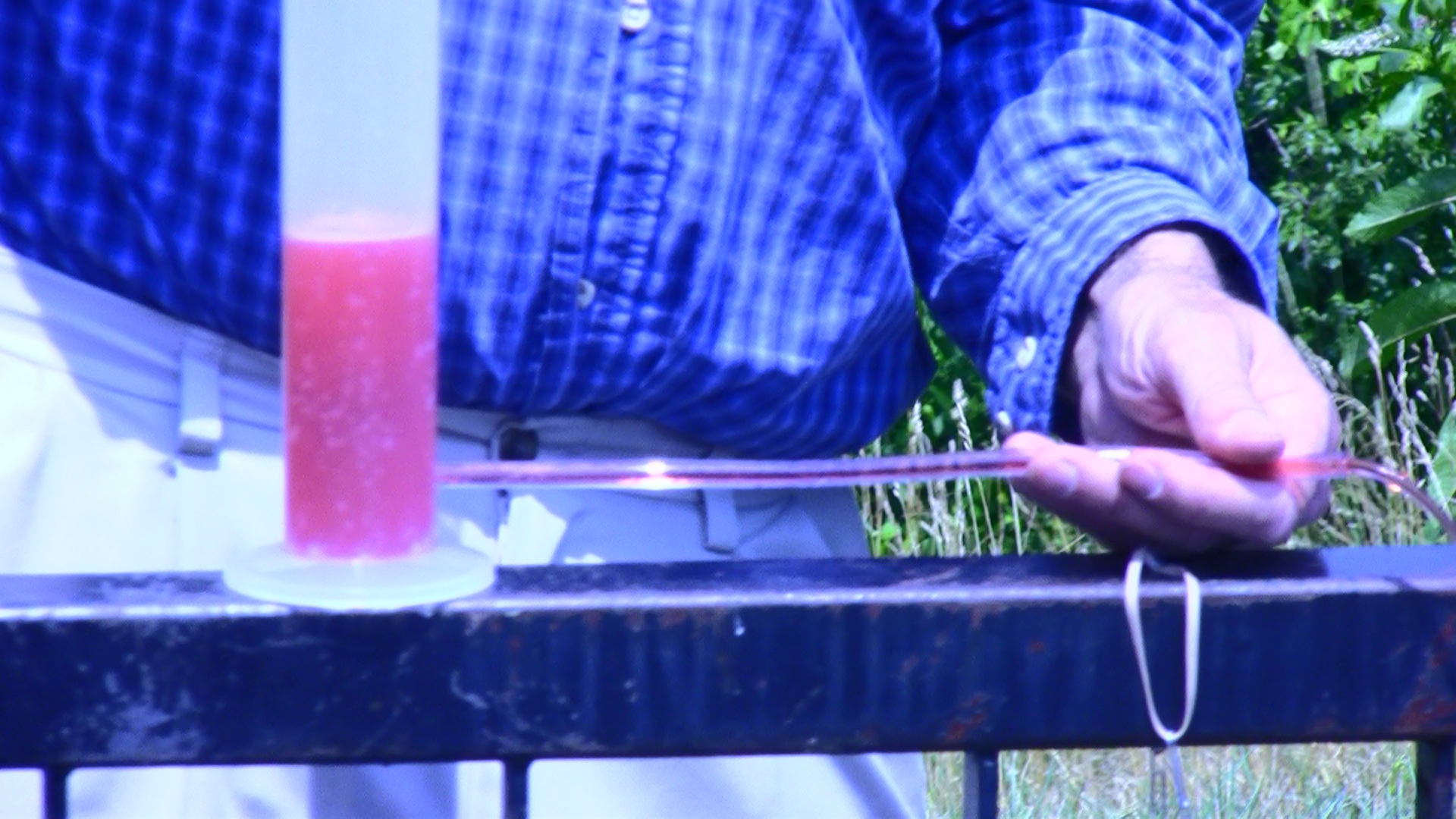 54
54
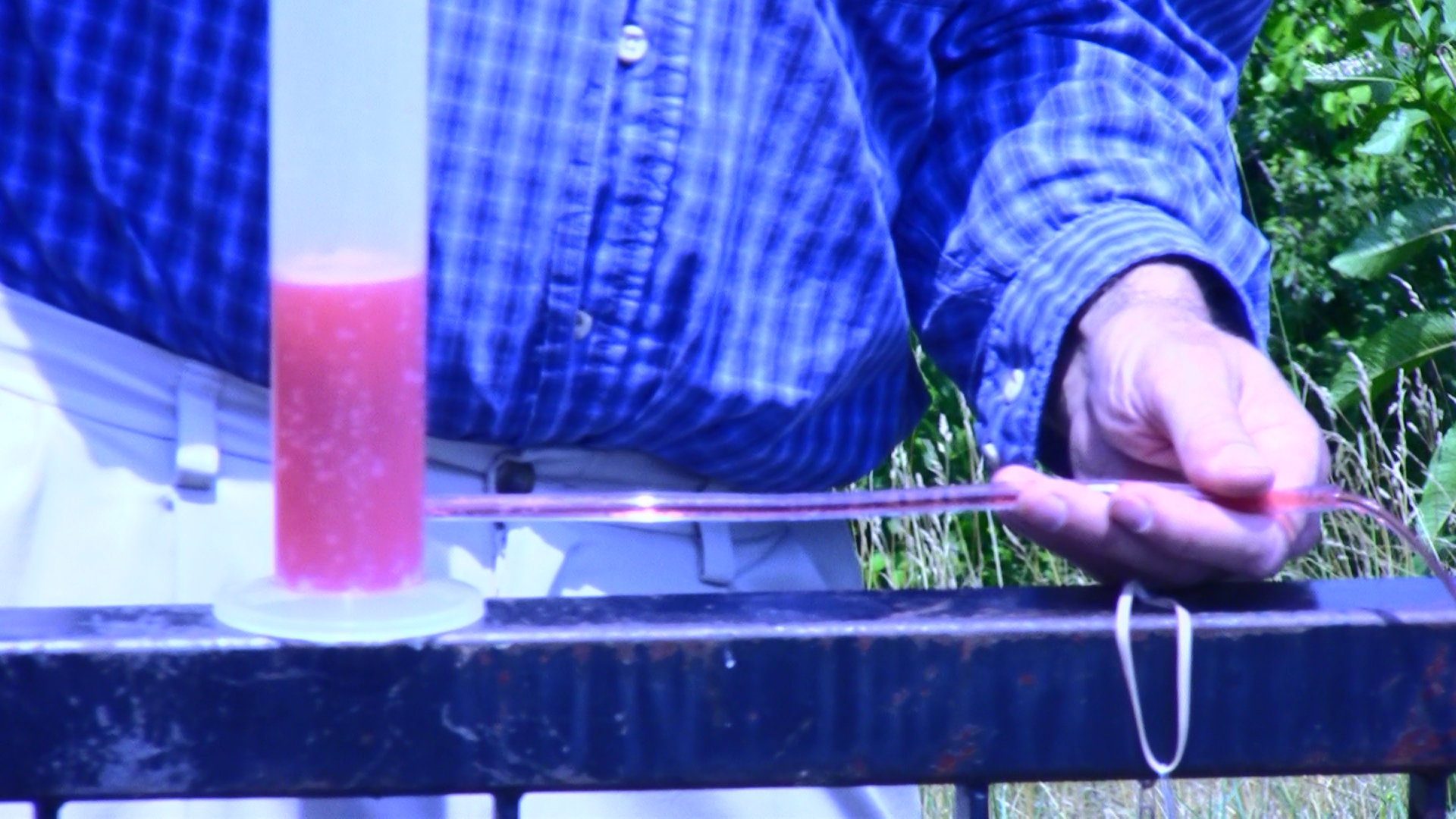 64
64
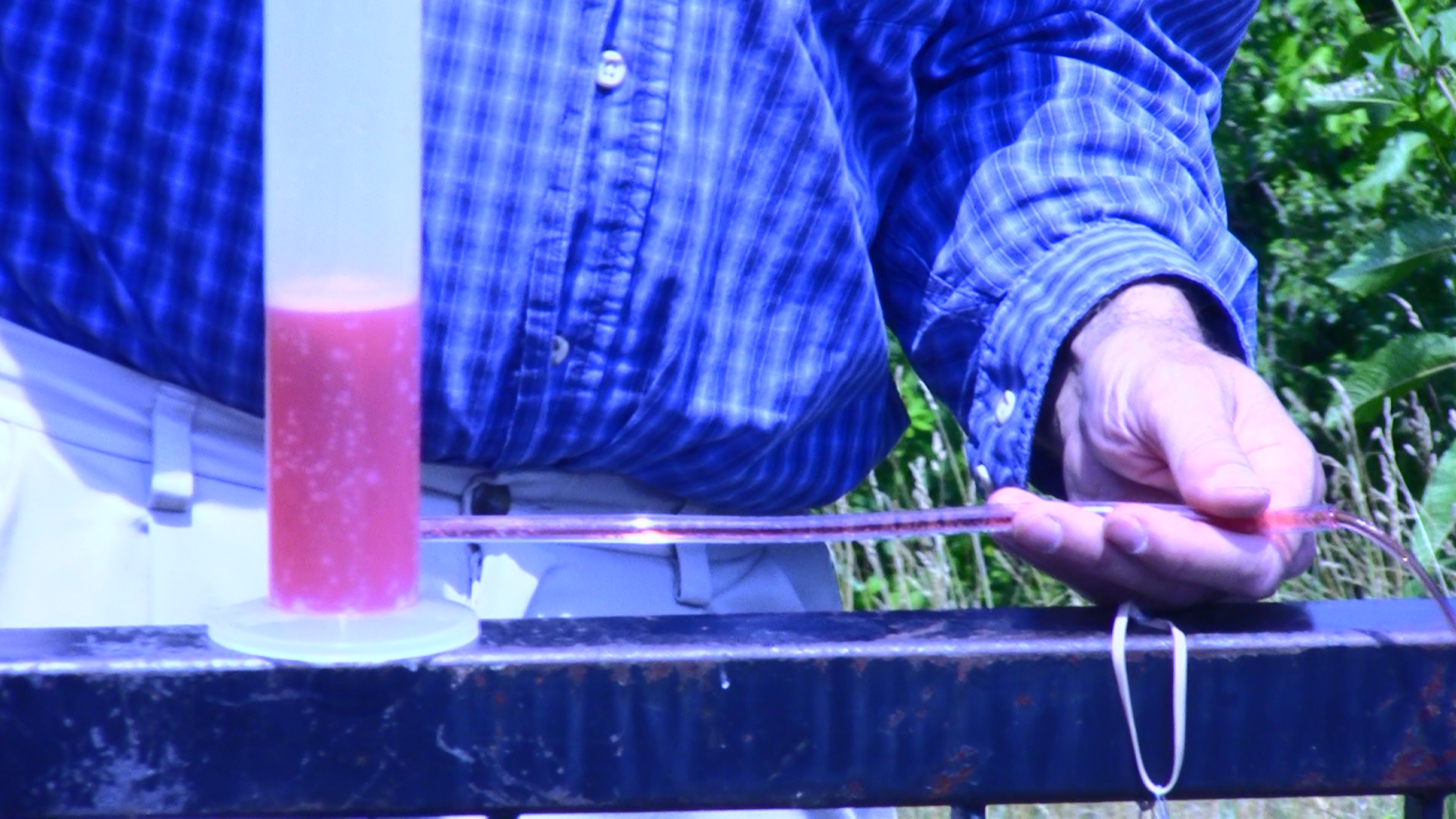 74
74
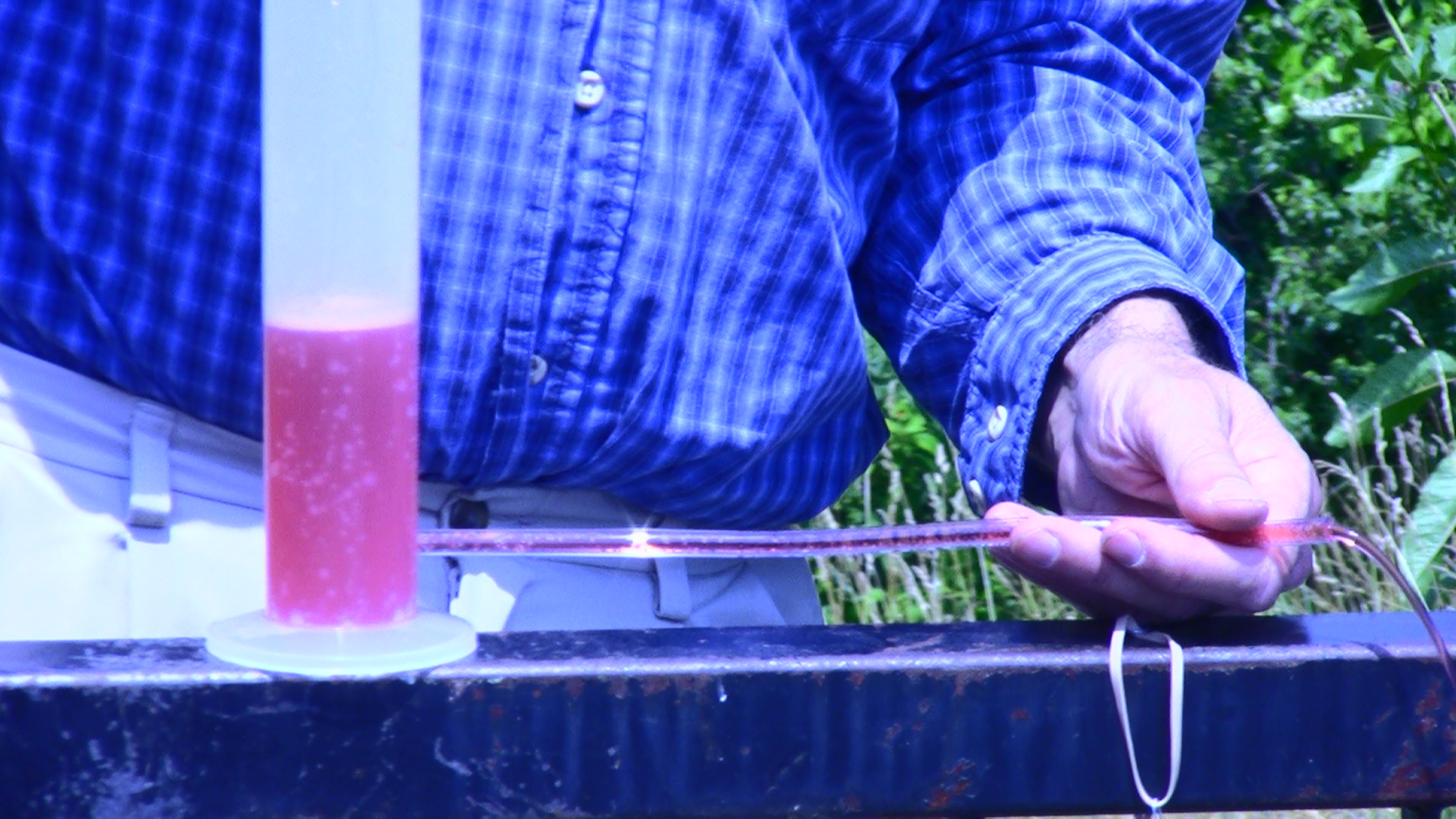 84
84
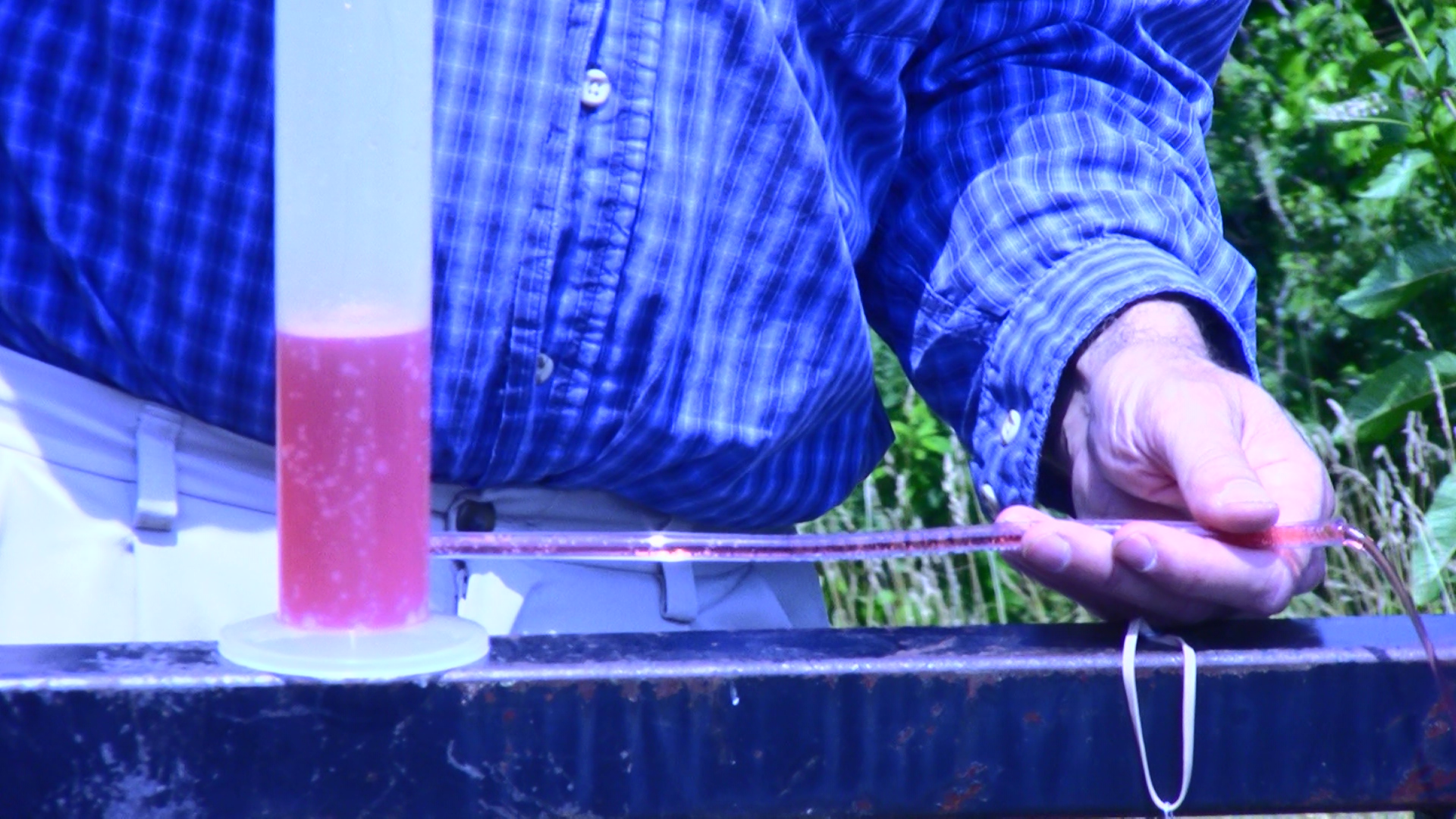 94
94
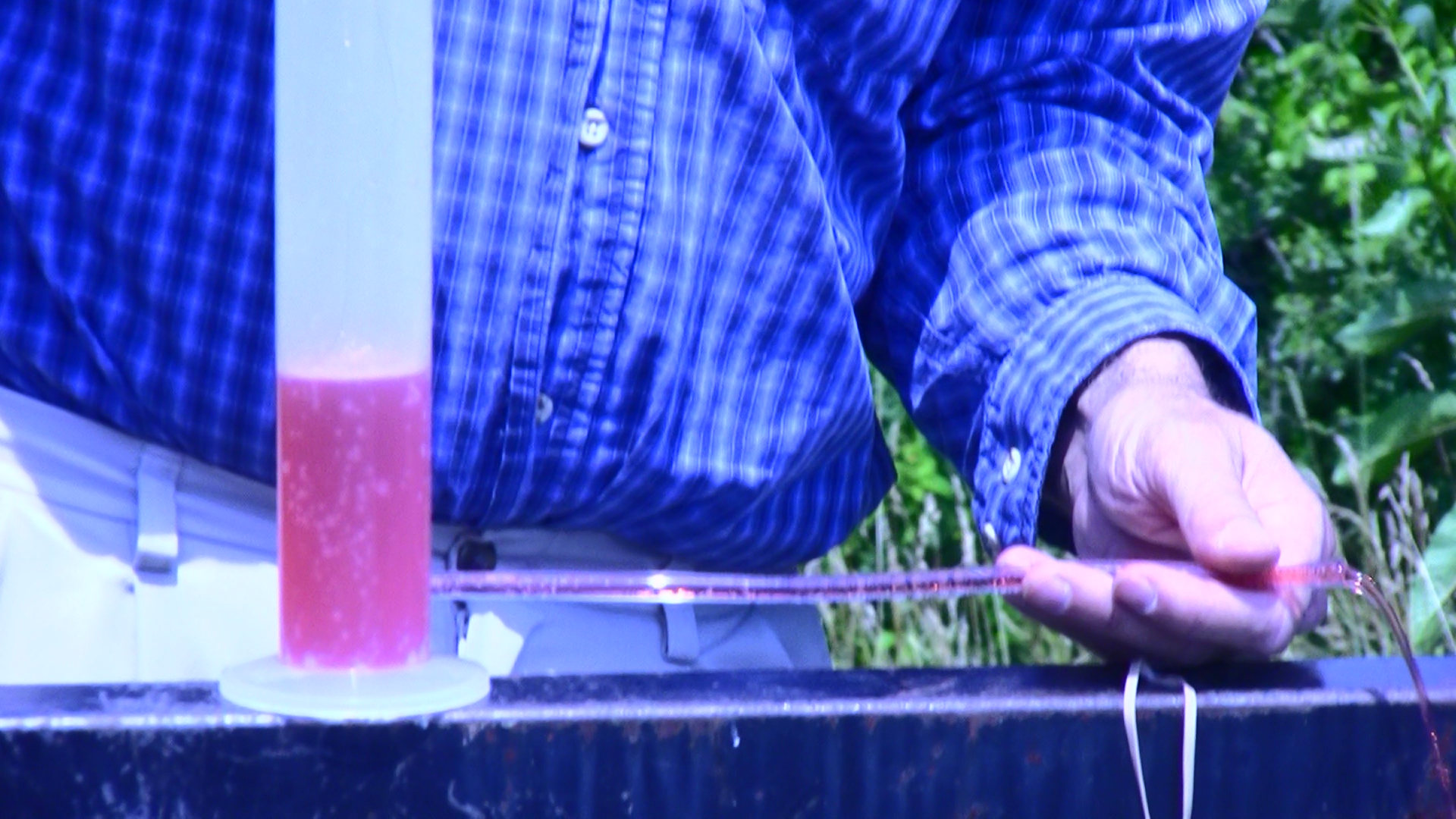 104
104
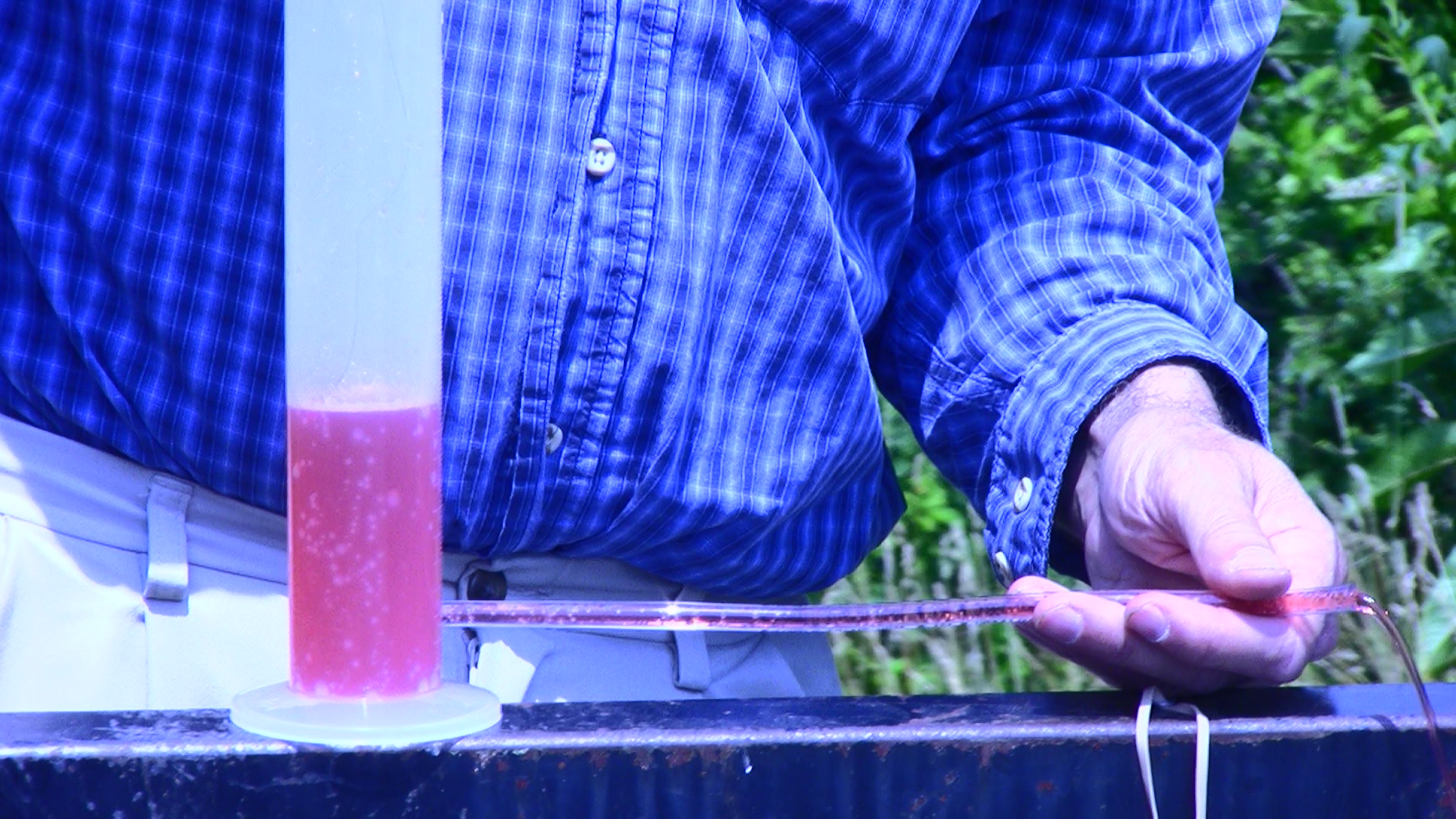 114
114
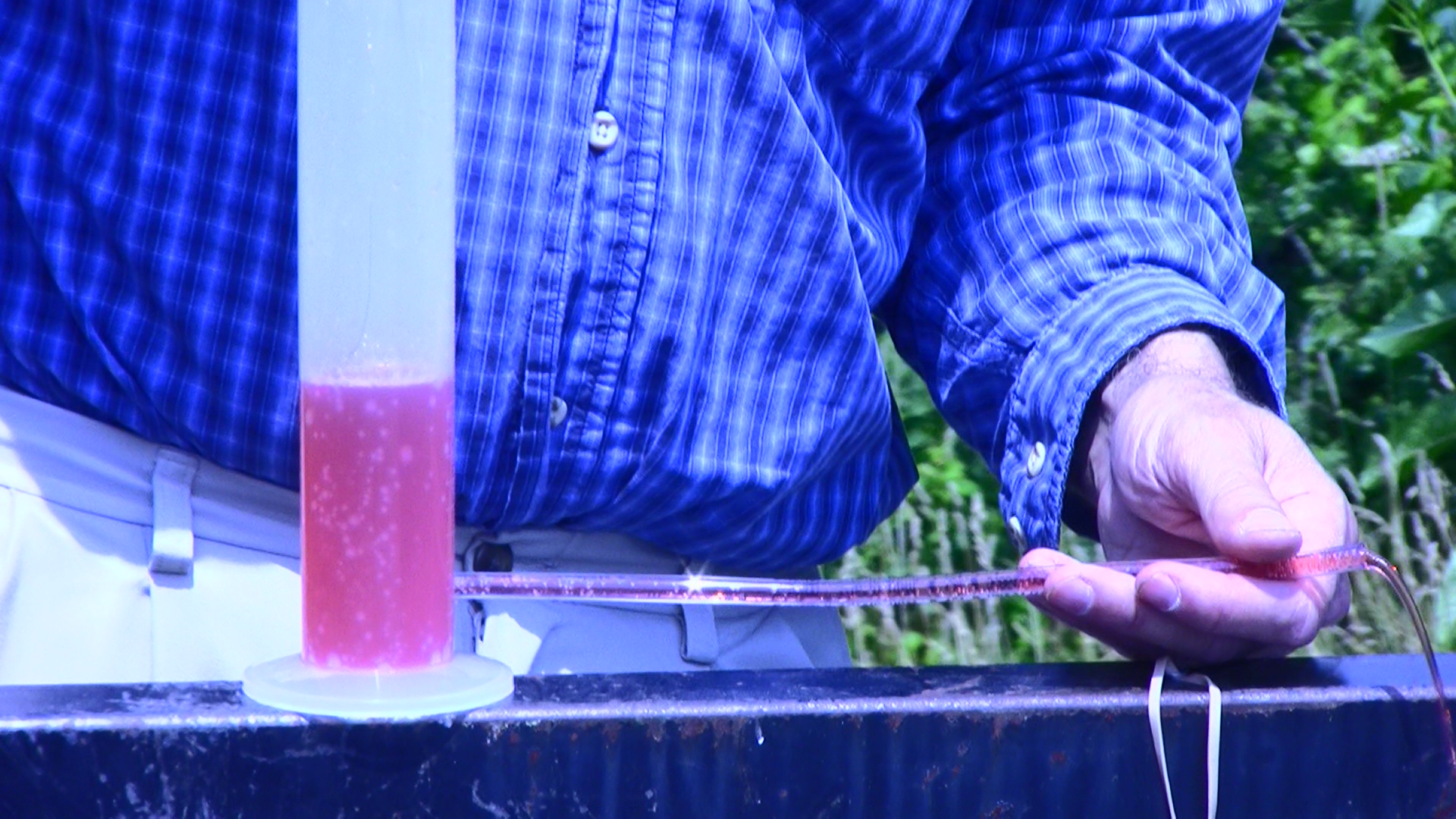 124
124side-by-side comparison of first and last frames


More good stuff
In the absence of dissipative forces the velocity of water flowing from a hole at depth y relative to the water surface is
where v is the velocity in cm/s when y is given in centimeters.
(Note: In more general terms v = sqrt( 2 g y), where g is the acceleration of gravity and the units of v depend on the units used for g and y. The given equation v = sqrt(1960 y) is based on g = 980 cm/s^2.).
How does the velocity of water in the tube compare to the velocity predicted by this equation? What is the nature of the dissipative forces that hinder the motion of the water?
Under ideal conditions the arc of the water stream that exits the tube at constant velocity is parabolic in shape. If the velocity of the outflowing water is changing this won't quite be the case; but if the velocity is changing slowly (on the time scale relative to the time required for the water to fall to the ground) the shape at any instant will be very nearly parabolic. The equation of the parabola can be used to determine the speed of the exiting water.
By locating three points on a parabola it is possible to determine its equation. If x and y are the horizontal and vertical coordinates of the parabola, then the equation of the parabola has form y = a x^2 + b x + c. If the coordinates of a point are substituted for x and y we obtain an equation with unknowns a, b and c. If we do this with three points on the parabola we will have three equations in a, b and c. These three equations are solved simultaneously to obtain the values of a, b and c. It is the value of a that determines the speed of the water. The equation of the parabola is obtained by substituting these values of a, b and c into the form y = a x^2 + b x + c.
We get a different parabola for each of the frames. There is significant uncertainty in measuring the coordinates of any given parabola from the picture; apart from issues of parallax, it was a breezy day, which affected the arc differently in each picture. Despite this there is a clear trend to the values of a.
The question is, what does the value of a appear to be changing at a constant, and increasing or a decreasing rate with respect to clock time?